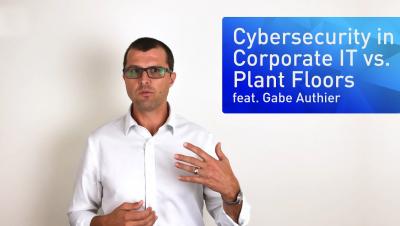Security | Threat Detection | Cyberattacks | DevSecOps | Compliance
Tripwire
Insider Threats: Root Causes and Mitigation Practices
The recent IBM 2019 Cost of Data Breach survey found that the cost of a data breach had risen 12% over the past 5 years to $3.92 million on average. While 51% of the data breach attacks were attributed to malicious or criminal actors, a stunning 24% of the breaches were caused by negligent employees or contractors. The report also notesed that the 51% of the criminal actors included, “malware infections, criminal insiders, phishing/social engineering and SQL injection.”
Disruption: The True Cost of an Industrial Cyber Security Incident
Industrial control systems are essential to the smooth operation of various national critical infrastructure. While once segmented from the web, these systems are now becoming increasingly more networked and remotely accessible as organizations transform to meet the digital age. This development potentially exposes industrial control systems to digital threats.
Canada's Recommendations for Upholding Digital Security in the Financial Sector
On 29 July 2019, Capital One disclosed a digital security incident in which an outside individual gained unauthorized access to its systems. That party then leveraged their access to obtain the personal and financial information of Capital One cardholders as well as of individuals who at one point applied for a credit card. Overall, the bank holding company estimated that the breach affected 100 million Americans as well as six million Canadians.
IBM Study Shows Data Breach Costs on the Rise
For the 14th consecutive year, IBM Security released its annual Data Breach Report that examines the financial impact of data breaches on organizations. According to the report, the cost of a data breach has risen 12% over the past 5 years to $3.92 million per incident on average. These rising expenses are representative of the multi-year financial impact of breaches, increased regulation and the complex process of resolving criminal attacks.
Industrial Cybersecurity in Corporate IT vs. Plant Floors
Survey: 84% of Security Pros Said Their Organizations Struggled to Maintain Security Configurations in the Cloud
Headlines continue to suggest that organizations’ cloud environments make for tantalizing targets for digital attackers. Illustrating this point, the 2019 SANS State of Cloud Security survey found “a significant increase in unauthorized access by outsiders into cloud environments or to cloud assets” between 2017 (12 percent) and 2018 (19 percent). These findings beg the question: how prepared are organizations to defend themselves against cloud-based threats?
Block newly-registered domains to reduce security threats in your organisation
It’s no secret that there are a lot of websites on the internet hosting malicious content whether they be phishing pages, scams or malware itself. Every day we hear of new attacks, there’s a common denominator of either a user having clicked on a link to a fraudulent website or a site having played host to code that pulled a malicious payload down from a third-party server.
Embrace the Chaos: An Emerging Trend in Software Engineering?
What if your job was to break things repeatedly in order to make them work better? Sounds like the dream of every curious six-year old, but it’s actually an emerging software engineering trend based in the transition from devops to devsecops. It’s designed to test systematic limitations with the goal of improving security and performance under any circumstances. The term is chaos engineering.





